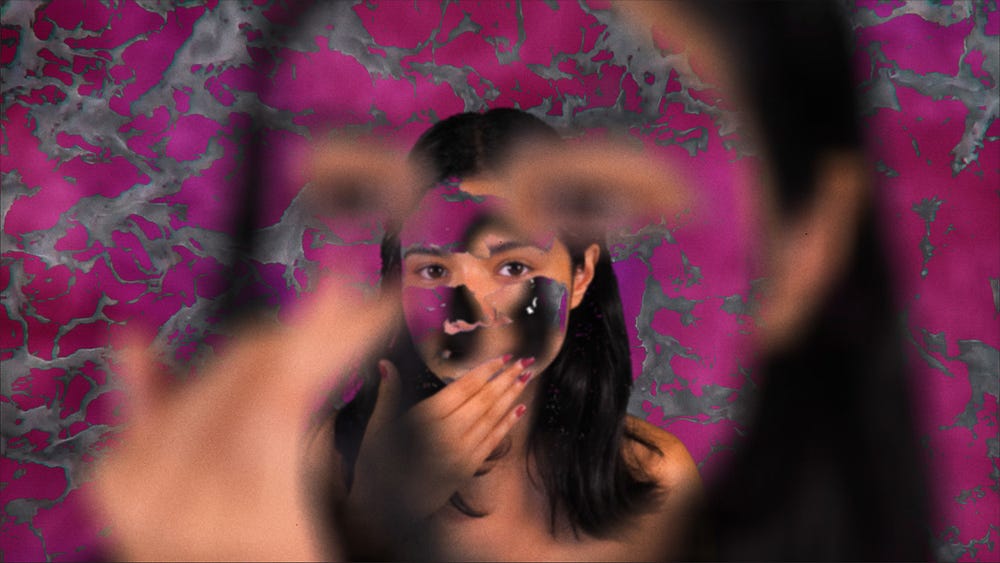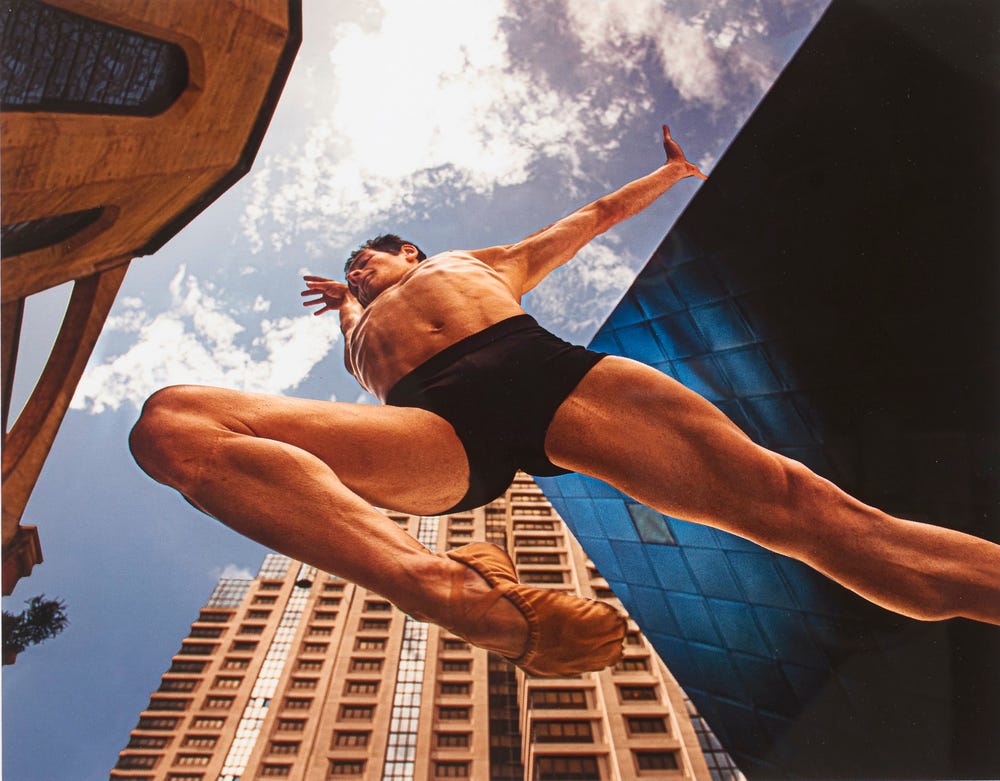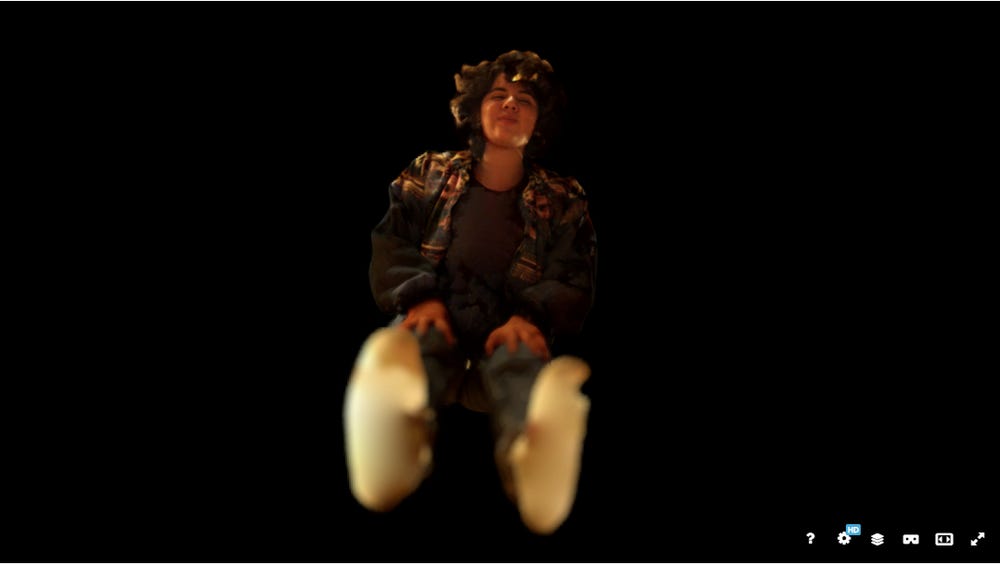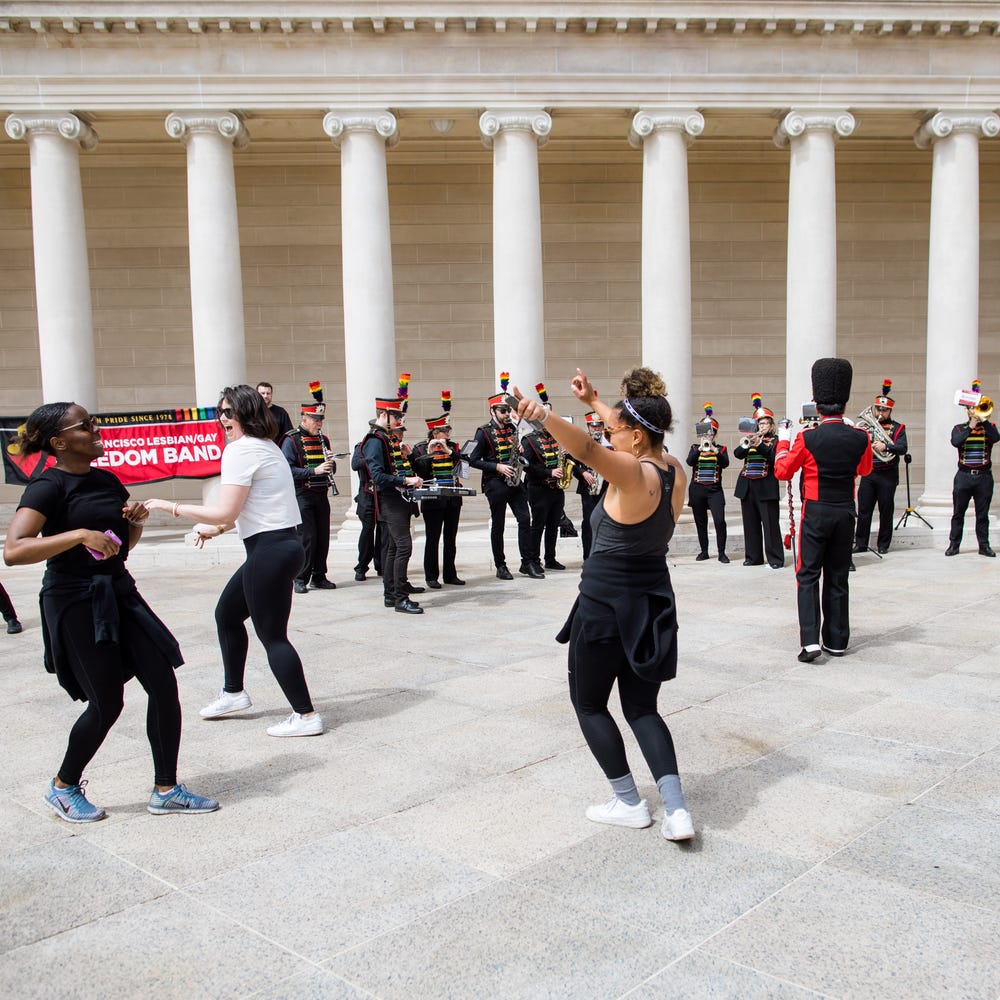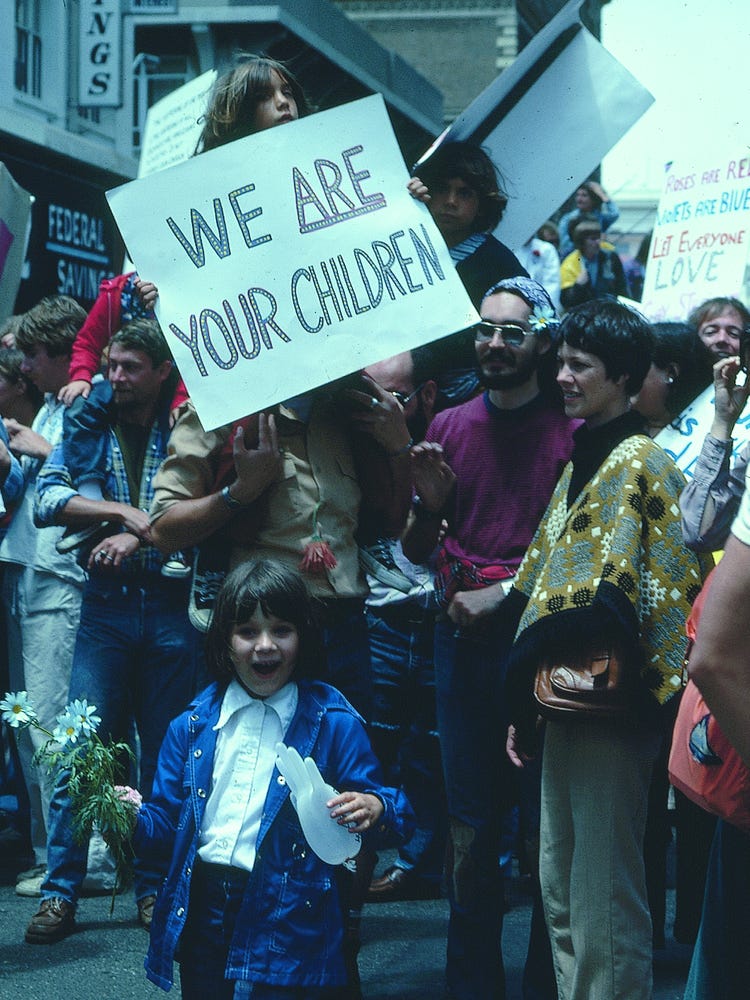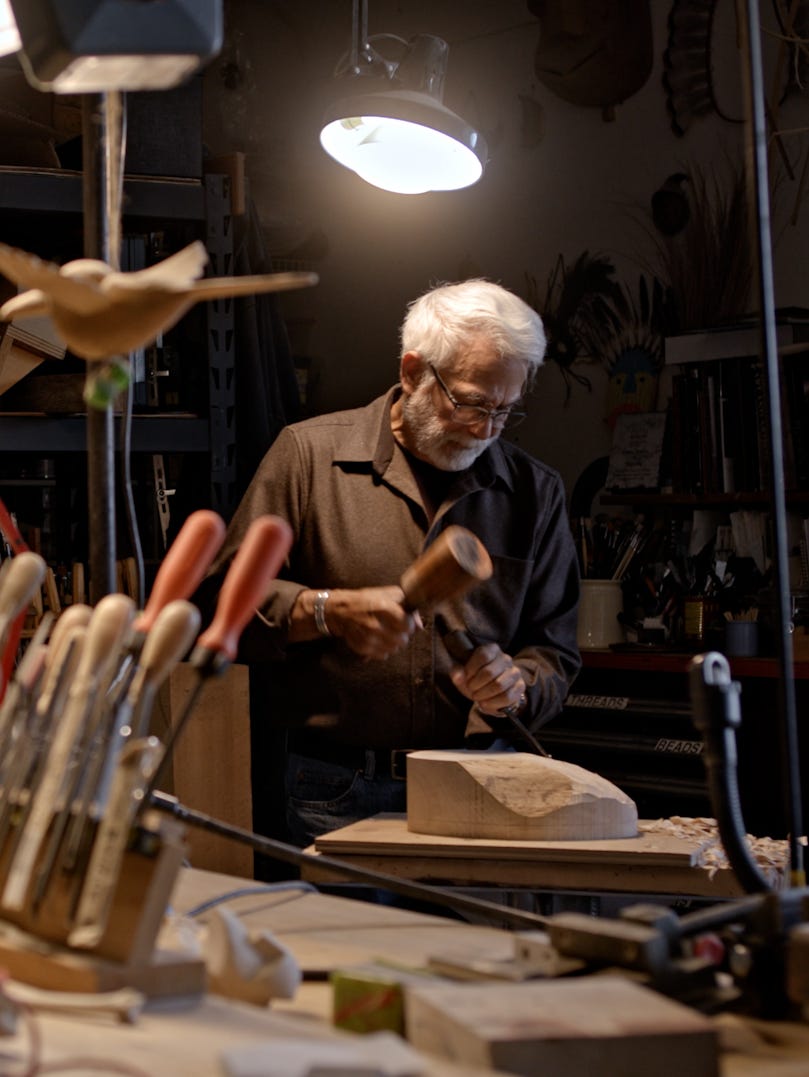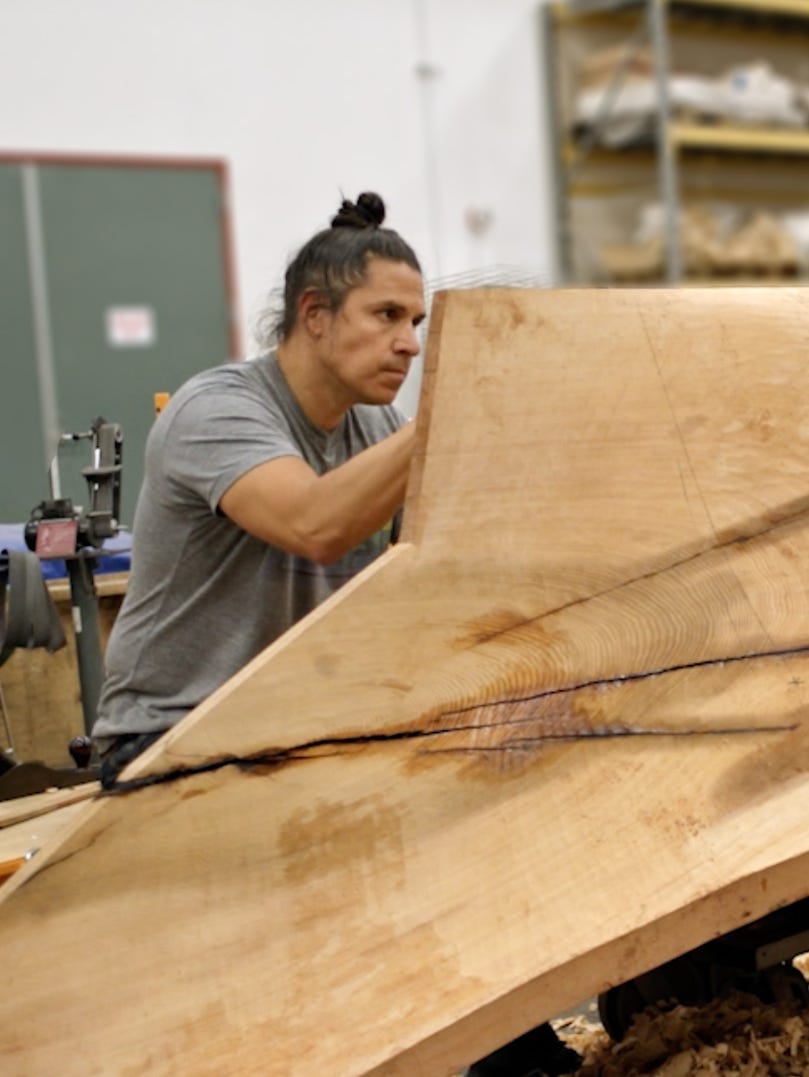Meet Daniel Miramontes, filmmaker and multimedia visual creator, and one of the 762 artists featured in the exhibition, The de Young Open. Miramontes is a San Francisco State University graduate and, as he describes himself, “a first-generation Mexican-American and 200,000th-generation human being.” Miramontes’s work centers around themes of oneness, connection, and an exploration of existential ideas, using visual media as a global tool of communication with a shared dialogue.
Two of Miramontes’s works were featured in The de Young Open: a photograph of a dancer in a moment of hope while coping with the impacts of COVID-19 on his career and his beloved Italy, and a visually intriguing video performance of repetition and sequence. When asked why he decided to submit pieces to the exhibition, Miramontes simply and directly recalls seeing the word “community” in the exhibition call and felt compelled by it as his work responds directly to the theme. During my research for our interview, I discovered that what makes his work captivating is that it is an honest reflection of the artist’s own curiosity about human psychology and a focused vision of building empathy and awareness in each project he creates.
Maria Egoavil: Can you share with us how and when you became interested in working with visual media?
Daniel Miramontes: It started back in middle school; illustration and drawing came very naturally to me. But it was one teacher in particular who noticed a great potential in me and pushed this idea that this was something I was good at. I remember receiving an award for photography in front of the entire school— which for a little kid, that’s huge—and with my teacher’s constant encouragement, gave me the confidence to keep going.
ME: How did you find yourself transitioning from photography to film?
DM: In 2015, with the rise of social media I didn’t like how photography was being consumed and the way it was portrayed. At that time, the photography scene in San Francisco was run by a very homogeneous group—white, straight, male—and the photographs being produced were borderline exploitative, taking the humanity out of people, such as the homeless, and converting them into an object for their composition. In addition, the fast engagement and consumption of media did not allow for real understanding and exploration, and those things all together made me stop doing photography for a year. It wasn’t until a friend suggested I try doing film that I started to take some classes.
ME: Did film give you the flexibility and space for storytelling that perhaps you found lacking in photography?
DM: Partially, yes, film allows you to make a longer project and gives the space for people to sit with you. And there is also the aspect of narrative; as soon as you pair two images together you create a storyline, which you can also create in photography, although, the way we are consuming these things today I am no longer sure that works.
ME: With the high consumption of and demand for visual media, how have you seen the landscape of digital content shift in the last eleven months during the pandemic?
DM: There has definitely been an increase in video demand and consumption during this time. I think in a way, media can work to hijack your psychology. We know that videos, ads, fight to hold your attention, and I think it’s come to a point where people are desensitized to it because they are saturated and overly stimulated with so much.
Daniel Miramontes, Transition 4, 2020. Performance by Gabriela Rivera, voice-over by Phillip Jones, Emma Bornstain, sound design by Fabio Vassallo.
ME: Can you please tell us more about Transition 4, your video work that was featured in The de Young Open, and its symbolism?
DM: Transition 4 (above) is a performance of a woman putting on paint that is revealing herself behind her; repeating the same process revealing herself each time in an endless loop. The video is an exploration of why “cause and effect" is a social construct. I am trying to show how our actions are connected, the ways our destinies are interlinked with one another, and what happens to one person has an effect on the rest of us. This also investigates the idea of what do we consider the beginning and end to a cycle, a person, the solar system, all are chains of reactions.
The name Transition 4 is an homage and a continuation of Peter Campus’s Three Transitions (1973), who is a pioneer of new media and video art, and in his project he was experimenting with three different types of transitions during the early developments of digital video. He was playing with new visual effects, the three possible transitions, and a green screen, which I also used on my video. However, I disagree that transitions even exist because that would be a “cause and effect,” which is why I made Transition 4 an endless loop. This philosophy is also relevant to what is happening now with COVID-19, as it has shown us the need for universal health care. We can’t leave a population in the world without the proper treatment and medication thinking that this won’t affect the rest of us or think that what you do will not matter to those not in your immediate circle. I think we should be moving away from individualism and further expand our level of care, and perhaps we will see the world as a community.
ME: Do you have a vision and/or philosophy you are trying to achieve throughout your projects?
DM: Yes, for personal projects outside of fiction I like to explore intangible ideas such as “where does memory come from?”. Right now, I am focused on “oneness.” I feel that it’s crucial to address some large world problems by making connections at a basic level—we are all made up of the same atoms with a different pattern. I think that if we are able to grasp that concept; it is a much more effective way of communicating and it would lessen the issues of inequalities because we would understand that we are all the same thing and therefore what’s beneficial to one is beneficial to the other. There is no argument for that.
ME: What key role does the audience play when you are creating a new project?
DM: Recently, I asked myself: “If I was the only person in the world, would I still make videos?” And the answer is probably not, I would just take a photograph and never develop it. I do create these projects for myself, because I have these questions and ideas to resolve in my own mind, but I think communication is still an important aspect of my work. And most importantly, I want my messages to be understood, the viewers don’t have to like it or agree with it, but I just want them to walk away with a clear message.
ICARUS, 2020. Downtown San Francisco, Directed by Pietro Pinto, photography by Daniel Miramontes.
ME: The second piece featured in The de Young Open is a photograph (above) from a film you produced right at the beginning of shelter in place. Can you please tell us a bit more about the film and your creative process?
DM: ICARUS (below) is a short film directed by Pietro Pinto, produced and edited by me, and starring San Francisco Ballet principal dancer Angelo Greco, which portrays him in moments filled with despair trying to cope with his new reality during the beginning of the COVID-19 crisis. In the video we see his dream, a break from his reality, he expresses all of his sorrow through dancing under the Golden Gate Bridge. I think, although this is not my personal story, we can all relate to this, the anxiety we felt, putting our life on hold, being uncertain of the future and wondering what is the “new normal.”
ME: The end scene credits show clips of the “new reality,” people wearing masks, socially distancing, and trying to carry out their daily activities while adapting to the changes. Now, as it’s been almost a year since S.I.P began, what do you think an ICARUS Part 2 would look like?
DM: We shot the ending credits during the beginning of the pandemic, and I remember thinking “this is all so weird, I have to shoot it,” but now it’s our new normal, so maybe I will have to think what would be something strange or not normal, perhaps people shaking hands or not wearing a mask.
As for where we are now, I think we have come to terms with our new normal, but I still think we are yearning for some form of physicality like touch. I would like to maybe dig into that a bit more since it is a basic human need that many people are lacking right now.
Elisa by gas_drawls on Sketchfab
ME: In addition to your film projects, you are also now experimenting with a different type of media, 3D scans. Can you please tell us a bit more about this?
DM: The World is Your Body is a series of 3D scans of people that I meet throughout my life. My goal is to highlight one person in the middle of an activity, isolate them, and below the image write a description about something that is connected to what was happening around them affecting their environment, but have no trace of in the image. In a way I am trying to juxtapose these two ideas of what you think you are and what you really are without your environment, trying to defy American ideals of “self-made” and “pulling yourself up from the bootstraps,” because we are forgetting that the ground is still holding us up. There are layers of foundations that are beyond you that still help you and dictated who you are today, and we tend to quickly dismiss that.
This is still a work in progress, it’s public right now, but I realized people were not understanding it. I have been adding the descriptions and putting my own opinions because what I want people to understand is that I am more interested in what is not shown. So, I am still asking myself, how do I highlight emptiness? The areas that are not shown, are part of who those people are, and without that in a way they look absurd, which connects back to my counter argument of “self-made” mentality.
ME: And last, what is next for you?
DM: I would like to create public art next! It’s a different type of accessibility and public engagement. Art in the street confronts you without you really having a choice, and also breaks barriers of “not knowing enough” in order to engage with it. Public art urges an immediate response “do I like it, does it speak to me?” to a broader audience.
To explore more of Miramontes’s work, visit his website.
Unfortunately, the de Young had to close its doors to the public only six weeks into the run of The de Young Open. The works will remain accessible online even after the exhibition ends.
Interview by Maria Egoavil, Public Programs Coordinator, Fine Arts Museums of San Francisco.
Learn more about The de Young Open.
